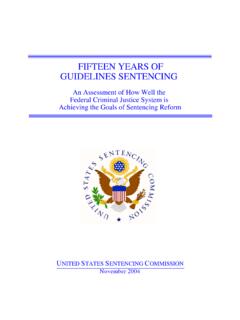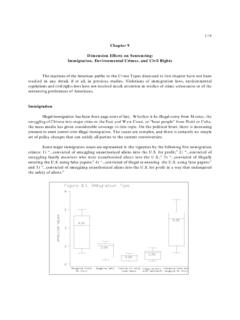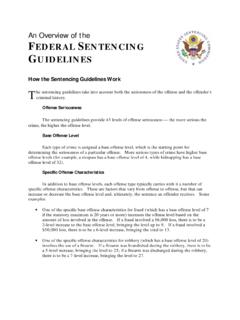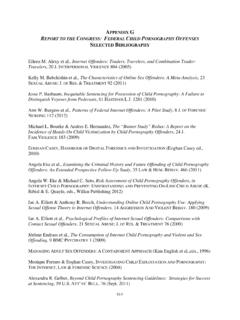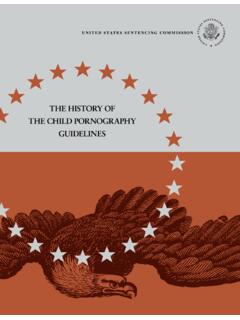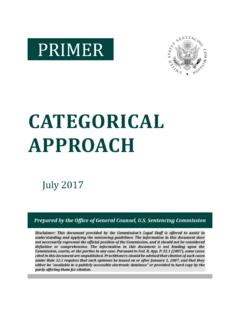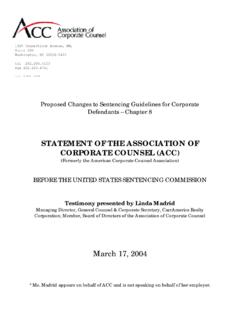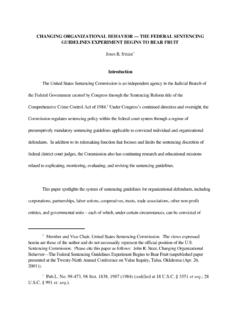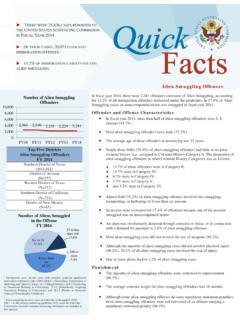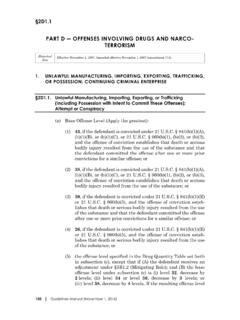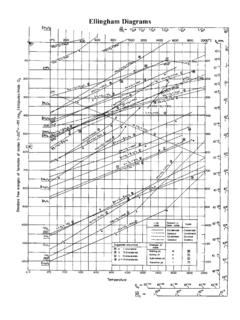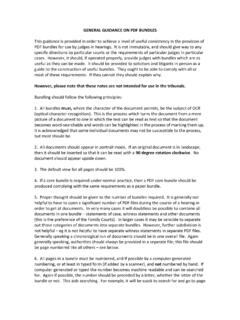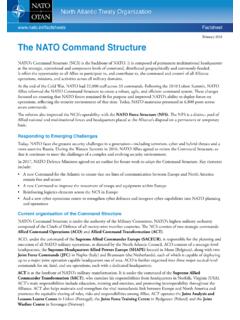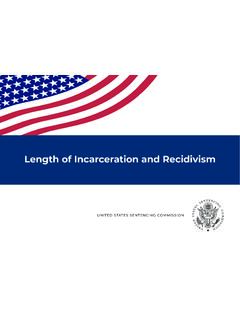Transcription of Fentanyl and Fentanyl Analogues: Federal Trends and ...
1 Fentanyl ANDFENTANYL ANALOGUES Federal Trends AND TRAFFICKING PATTERNS United States Sentencing CommissionJanuary 2021 CHARLES R. BREYERC ommissionerDANNY C. REEVESC ommissionerPATRICIA K. CUSHWAEx OfficioCANDICE C. WONGEx OfficioKENNETH P. COHENS taff DirectorJAMES T. STRAWLEYD eputy Staff DirectorJANUARY 2021 Fentanyl ANDFENTANYL ANALOGUESFEDERAL Trends AND TRAFFICKING PATTERNSA uthorsKristin M. Tennyson, Deputy Director, Office of Research and DataCharles S. Ray, General CounselKevin T. Maass, Research Associate2 Introduction and FindingsFentanyl and Fentanyl Analogues Statutory and Guideline Penalty Sentencing Commission ActionData Analysis IntroductionDistribution PracticesPrevalence and GeographyOffender and Offense CharacteristicsTrafficking Conspiracies and Offender FunctionMisrepresentationDeath and Serious Bodily Injury Sentencing OutcomesConclusionTable of ContentsCongressional and Executive Branch Action61013151820242730323436421 Fentanyl and Fentanyl Analogues.
2 Federal Trends and Trafficking PatternsIntroduction and FindingsFentanyl is a synthetic opioid analgesic that is approximately 30 times more potent than Fentanyl abuse has become both more prevalent and more dangerous in recent years because of the increasing appearance of substances chemically or pharmacologically similar to Fentanyl , collectively classified as Fentanyl analogues. Many Fentanyl analogues are even more powerful than Fentanyl and are manufactured by modifying Fentanyl s basic chemical The Centers for Disease Control and Prevention has stated that illicitly manufactured Fentanyl and Fentanyl analogues likely caused a ten percent increase in the rates of death involving synthetic opioids in only one year, from 2017 to Offenses involving Fentanyl and Fentanyl analogues have increased at an alarming rate in recent years.
3 This trend is reflected in the Federal caseload where the number of drug trafficking cases involving Fentanyl and Fentanyl analogues has increased exponentially. In fiscal year 2015, the Federal courts sentenced 24 Fentanyl drug trafficking offenders. In fiscal year 2016, courts sentenced 57 Fentanyl drug trafficking offenders. In the following fiscal years, the number of Fentanyl cases rapidly increased, with 153 in fiscal year 2017 and 389 in fiscal year 2018. Spurred by these Trends , the Commission, Congress, and the Department of Justice have pursued policies intended to increase interdiction and promote appropriate punishment for Fentanyl and Fentanyl analogue traffickers. In 2018, the Commission amended the drug trafficking guideline to promote more uniform application of the penalties for Fentanyl and Fentanyl analogue offenders and to add new enhanced penalties for offenders who knowingly misrepresent these The Commission s action followed a multi-year study that demonstrated the potency, lethality, and increasing prevalence of Fentanyl and Fentanyl the Commission s 2018 amendment, Congress has considered legislation and the Department of Justice has undertaken new enforcement initiatives to address the increased trafficking and harms caused by Fentanyl and Fentanyl analogues as these Trends show no sign of abating.
4 In the fiscal year following the Commission s amendment, the number of Fentanyl cases more than doubled from 389 in fiscal year 2018 to 886 in fiscal year 2019. The number has increased by 3,592 percent from 24 in fiscal year 2015 to 886 in fiscal year 2019. Additionally, though still only a small portion of the overall Federal drug trafficking caseload ( ), in fiscal year 2019, Fentanyl or Fentanyl analogues offenders accounted for percent of the drug trafficking offenders sentenced where the offense of conviction established that a death or serious bodily injury resulted from the substance s continued Congressional and Executive Branch interest in Fentanyl and its analogues, combined with the rising numbers of these cases and the high risk of harms attributed to these substances, highlights the importance of continued study of Fentanyl -related offenses.
5 The Commission, therefore, is issuing this report to inform future deliberations in the Federal criminal justice system about Fentanyl and Fentanyl analogue offenses and publication summarizes the Commission s policy work on Fentanyl and Fentanyl analogue offenses. It then discusses the continuing policy-making efforts of Congress and the Department of Justice in this area. Finally, the publication presents data about Fentanyl and Fentanyl analogue offenses since 2005 and provides an in-depth analysis of fiscal year 2019 Fentanyl and Fentanyl analogue offenses and offenders. This report examines the relatively new and emerging problem of Fentanyl and Fentanyl analogue trafficking. The United States Sentencing Commission (the Commission ) issues this report pursuant to its authority to collect, analyze, and report on Trends in Federal 2 United States Sentencing Commission24 Fentanyl8864 Fentanyl Analogue23320052006200720082009201020112 0122013201420152016201720182019 Fentanyl abuse has become both more prevalent and more dangerous in recent years because of the increasing appearance of substances chemically or pharmacologically similar to Fentanyl , collectively classified as Fentanyl analogues.
6 Figure 1. Number of Federal Fentanyl and Fentanyl Analogue Trafficking Offenders Over Time3 Fentanyl and Fentanyl Analogues: Federal Trends and Trafficking PatternsKey FindingsWhile Fentanyl and Fentanyl analogue offenders remain a small proportion of the overall Federal drug trafficking caseload ( ), the number of Fentanyl offenders and Fentanyl analogue offenders has sharply increased over the last several years. Since fiscal year 2015, the number of Fentanyl offenders reported to the Commission more than doubled each fiscal year, resulting in a 3,592 percent increase, from 24 to 886 offenders. Since fiscal year 2016, the number of Fentanyl analogue offenders increased 5,725 percent, from four to 233 offenders. Many Fentanyl and Fentanyl analogue offenders trafficked more than one drug type.
7 Almost half ( ) of Fentanyl offenders also trafficked at least one other drug. The most common other drugs were heroin ( ) and powder cocaine ( ). Over half of Fentanyl analogue offenders ( ) also trafficked at least one other drug. The most common other drugs were heroin ( ), Fentanyl ( ), and powder cocaine ( ).Five Fentanyl analogues, carfentanil, furanyl Fentanyl , acetyl Fentanyl , 4-fluoroisobutyryl Fentanyl (or para-fluoroisobutyryl Fentanyl ), and cyclopropyl Fentanyl accounted for percent of the Fentanyl analogues trafficked in fiscal year all Fentanyl and Fentanyl analogues trafficked in fiscal year 2019 were illicitly manufactured. Only 18 Fentanyl offenders and no Fentanyl analogue offenders trafficked a diverted prescription form of the substance.
8 4 United States Sentencing CommissionFor offenders sentenced in fiscal year 2019, Fentanyl and Fentanyl analogues had distinct trafficking patterns. Fentanyl was more likely to enter the United States through the United States/Mexico border, while Fentanyl analogues were more likely to be purchased directly over the Internet or dark web, frequently from China, and shipped by international mail or express package one-third or more of Fentanyl and Fentanyl analogue offenders ( and , respectively) sold these substances as a different drug, almost always heroin or a diverted prescription medication. Just under five percent ( ) of Fentanyl offenders and nine percent ( ) of Fentanyl analogue offenders knowingly misrepresented these substances as another drug during a drug fiscal year 2019, Fentanyl or Fentanyl analogue offenders accounted for almost three-quarters ( ) of all drug trafficking offenders sentenced where the offense of conviction established that death or serious bodily injury resulted from the substance s use.
9 Fentanyl analogues are more lethal than Fentanyl , as evidenced by the higher rate of death and serious bodily injury resulting from use. Significantly more Fentanyl analogue offenses ( ) resulted in a user s death, compared to Fentanyl offenses ( ). Fentanyl analogue offenders received longer average sentences (97 months) compared to Fentanyl offenders (74 months) and had the longest average sentences of any major drug type sentenced in the Federal and Fentanyl Analogues: Federal Trends and Trafficking PatternsWhat are Fentanyl and Fentanyl AnaloguesFentanyl is a prescription opioid analgesic first approved by the Food and Drug Administration in Several formulations of pharmaceutical Fentanyl exist, including single-entity and combination injectables, buccal tablets ( , a tablet that is inserted in the buccal pouch (cheek)), transmucosal lozenges ( , lollipops ), transdermal patches, sublingual (under the tongue) spray and tablets, and nasal Since 1968, some Fentanyl analogues were also developed and approved in the United States for medical use in humans ( , remifentanil, alfentanil, and sufentanil)
10 And in animals ( , carfentanil and thiafentanil).9 These Fentanyl analogues and Fentanyl itself are controlled as Schedule II substances under the Controlled Substances Act (CSA) due to their approved medical use and high potential for abuse and With these notable exceptions, Fentanyl analogues are otherwise controlled as Schedule I substances under the CSA because they have no approved medical use in the United States and have a high potential for abuse and Increased Use of Fentanyl and Fentanyl AnaloguesFentanyl and Fentanyl analogue trafficking have increased dramatically. According to the Drug Enforcement Administration, the number of drug seizures involving Fentanyl remained under 1,000 per year since 2001 before increasing significantly to 4,697 in 2014, 14,440 in 2015, and 34,199 in In fiscal year 2017, more than 83,400 domestic drug seizures submitted for forensic testing involved Fentanyl or Fentanyl analogues, which was almost twice the number in 2016 and almost five times the number since Additionally, in 2018, of the approximately 318,634 tablets and capsules seized within the United States and subjected to Drug Enforcement Administration laboratory testing, approximately 108,015, or 34 percent.
